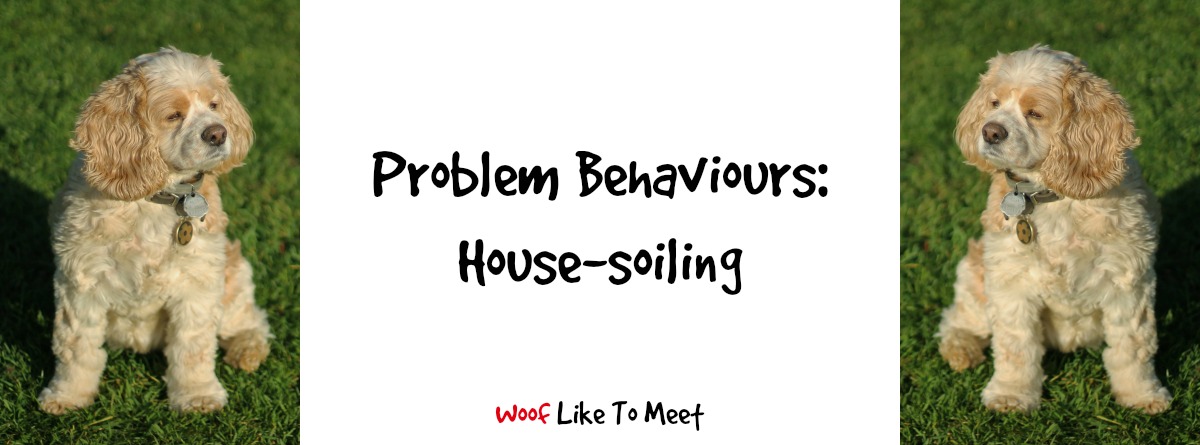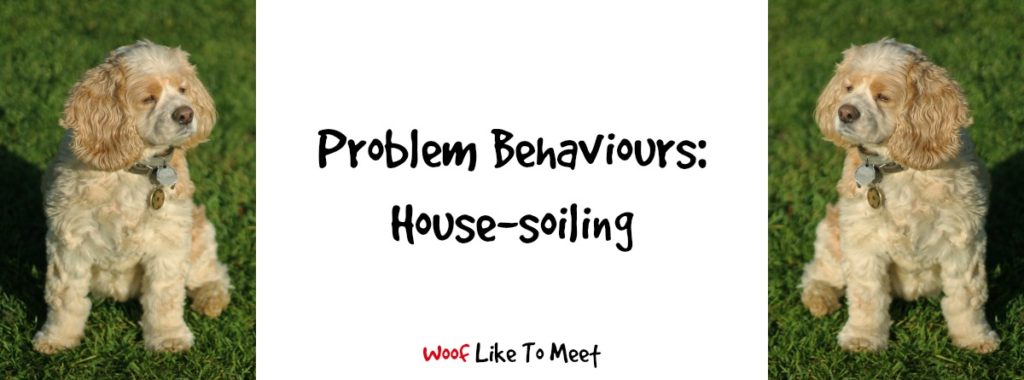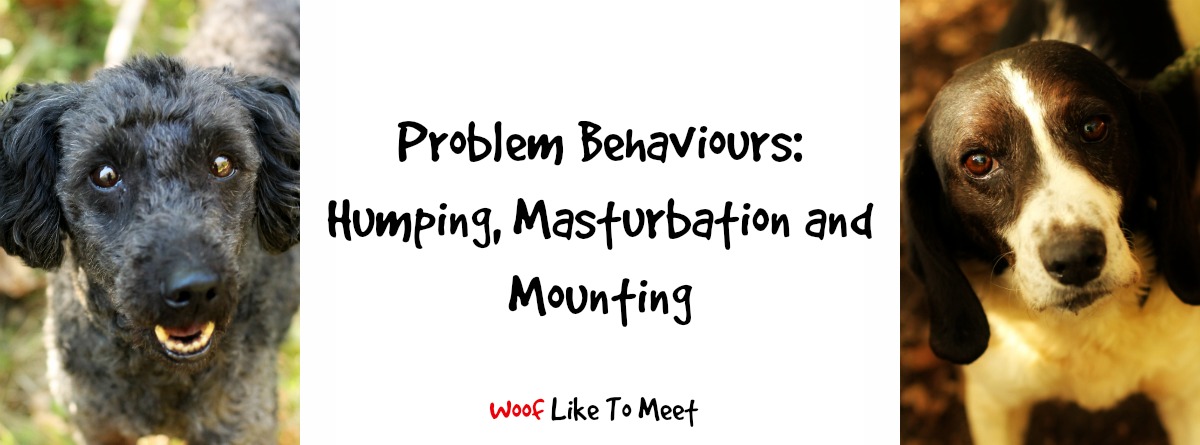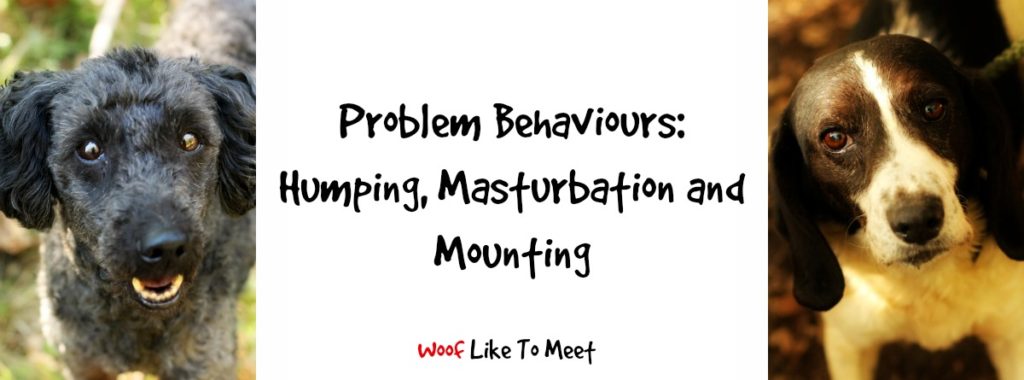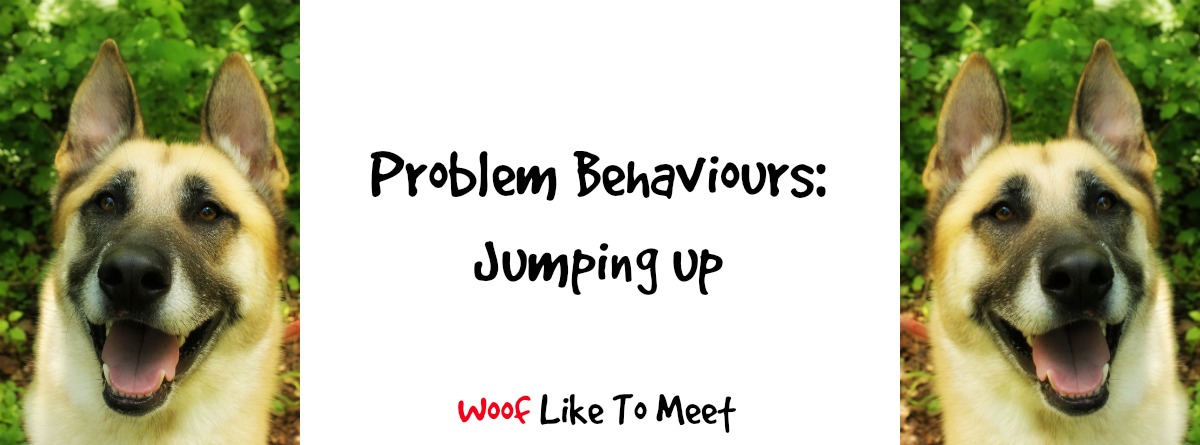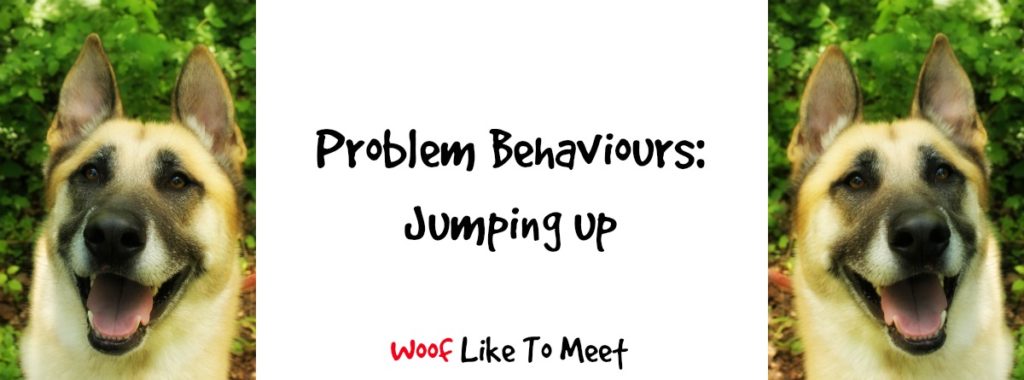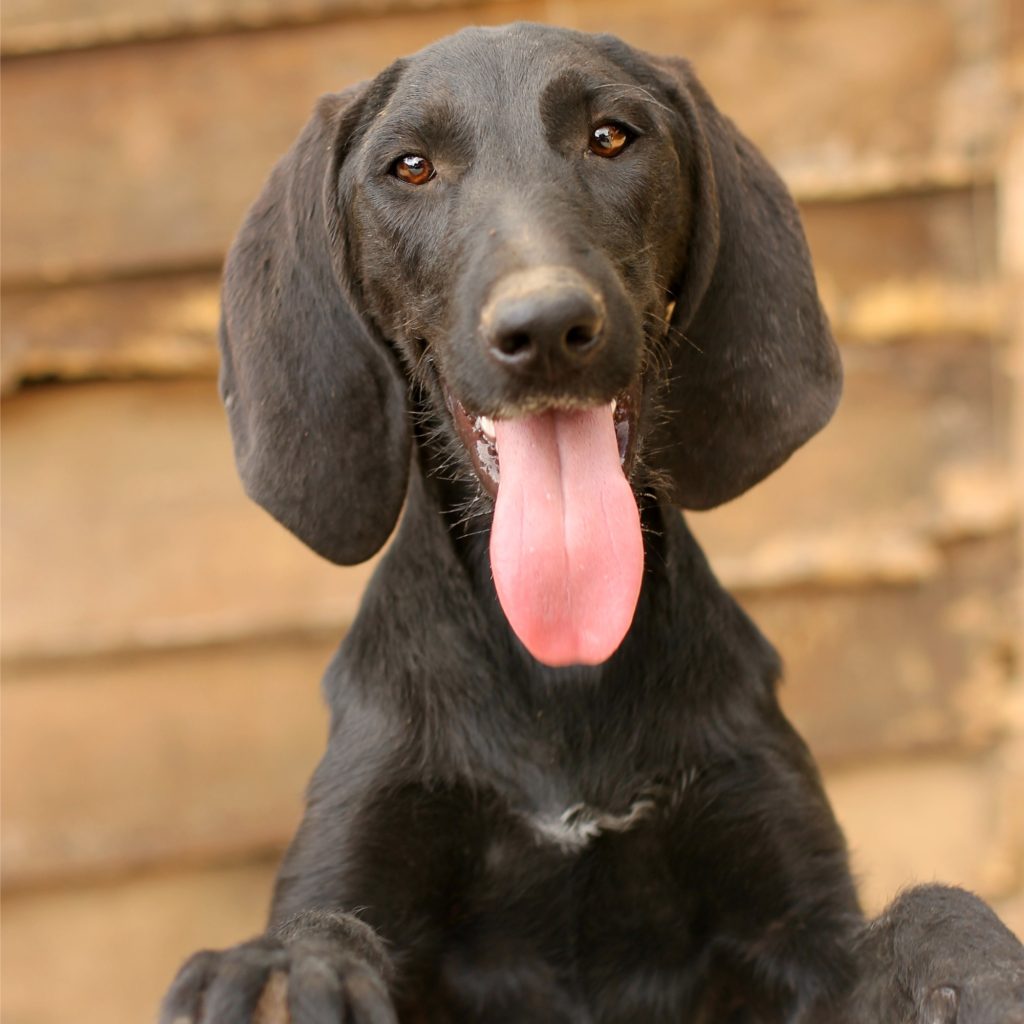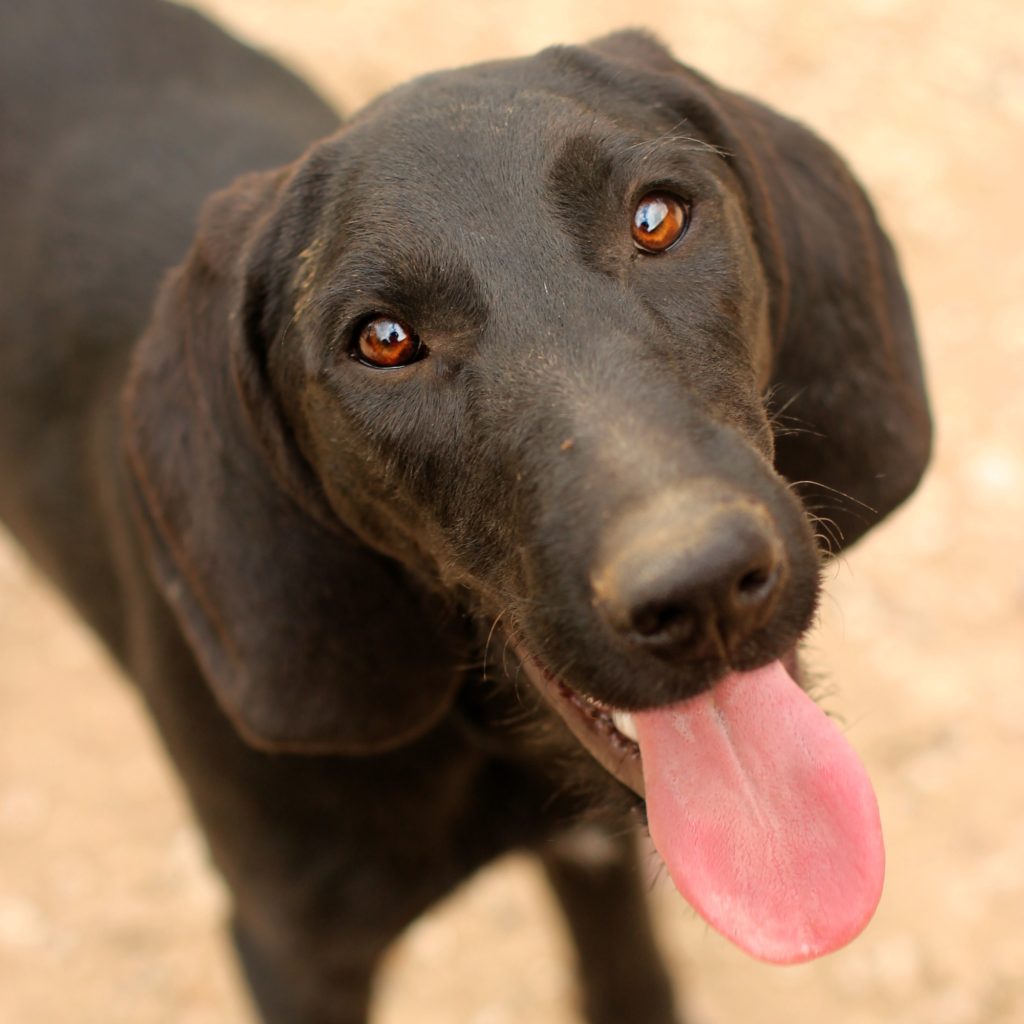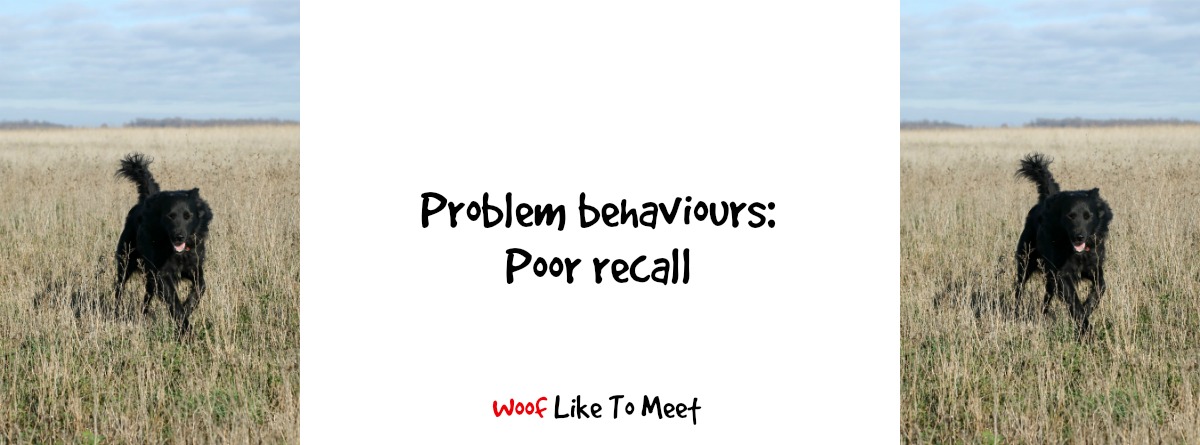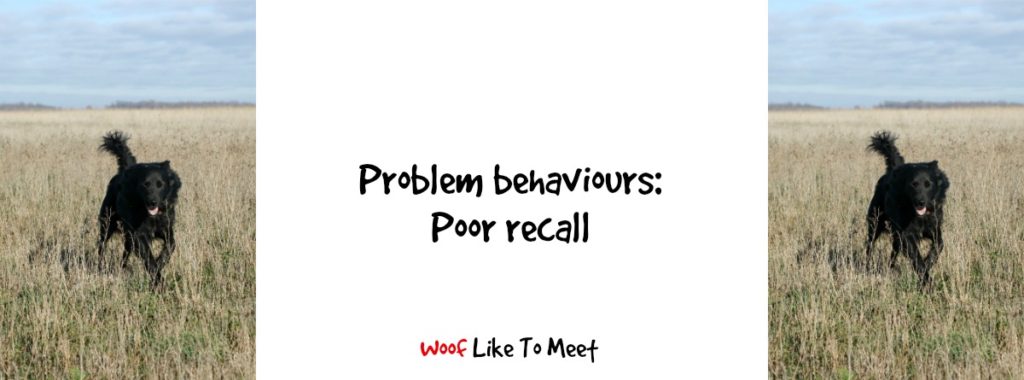This is Tilly. She’s beautiful, isn’t she? But Tilly has a dirty little secret… Well, not so secret, since I tell everyone about it. My little Tilly Popper is sometimes known as Tilly Pee. Yes, that’s Tilly P for Tilly Popper, but also on account of her sensitive bladder. And her occasionally sensitive bowels.
The fact is that when she first arrived here, I had to go through the whole house-training debacle with a five-year-old dog… one whose vet notes said that she saw a veterinary behaviourist in 2006 because she was having problems with house-soiling, and one who, in 2010, arrived here without having made very much progress. It took three months before she was trustworthy. Even these days, she’s happily more hit than miss. All the same, it’s inevitable to get worse rather than better.
Why then do dogs house-soil?
Firstly there are age-related issues. Puppies will soil the house because they have small bladders and small intestines. Put something in and something is going to come out. There just ain’t enough room inside to keep it all in. Plus, they’re not very good at knowing when they need to go. Anyone who’s ever had small children will know the ‘oooh, oooh, too late’ moments. Adolescent males, castrated or not, can find themselves wanting to mark stuff. At the other end of the spectrum, older dogs may have accidents that they never had before. This happened to my beautiful Tobby before he died. Neurological damage can mean they are less aware of when they need to go and have less control over the muscles that keep it all in. Arthritis can make it painful to get up to tell people they need to go. Canine cognitive dysfunction can mean your dog is simply forgetting to go. These are certainly more likely if your dog is defecating in the house rather than just urinating.
This leads us on to medical issues, not least age-related medical issues like arthritis and cognitive dysfunction. Spaying can result in weak bladders, and might not happen until a dog is older. There’s all sorts of Embarrassing Bodies kind of stuff at work in dogs as well, such as ectopic ureters, especially among the ladies. There can also be kidney problems or diseases such as diabetes, Cushing’s and Addison’s which can lead to accidents. Bacterial infections, viral infections, body parts in the wrong place, hormonal issues and medicines are common reasons for accidents. Even my poor Amigo, who is so terrified of making a mess in the house, had a couple of accidents during his recent stroke, and then regular accidents when he was on corticosteroids. They stopped as soon as the medication stopped. IBS and food sensitivities may cause accidents of a more solid variety. Tilly has food allergies, and any rogue ingredients can mean that she’s happy to leave a present in the kitchen from time to time if I’m not in.
This is why a vet should be your very first stop if you have a dog with house-soiling issues, whether they are a new rescue or not. Any changes at all in habits should be a reason for a vet visit. It’s not to say there will be anything to be done in particular, but your dog may have something physical that needs attention.
There are then also psychological issues. Changes in routine can disrupt a dog’s usual habits. This is more than likely the cause of Tilly’s regularly weak bladder at the beginning of her time here. Everything had changed. Plus, she tends to have accidents when she’s not on her best form. Any disruption of her very delicate mental or physical balance can result in a puddle. I wouldn’t go as far as saying they were dirty protests, but she certainly has a way of making her discomfort known. Nervous dogs may be so overwhelmed by emotion that they let go, sometimes called ‘submissive urination’. Often this happens when they are excited or overwhelmed. Tilly used to pee if anyone petted her within a couple of minutes of coming into the house. A sudden spike in adrenaline and whoops! Another psychological reason dogs might eliminate in the house is under severe trauma if they have separation anxiety or if they are noise-sensitive and there is a storm or fireworks in your absence.
Poor habits can also be the reason behind house-soiling. If a dog has never developed a strong instinct not to eliminate inside, then you may find it’s all a great big toilet for them. Often this is more likely with puppies who haven’t been given enough space to separate elimination spots from play spots, food spots and sleeping spots. If they haven’t been house dogs before, new rescues may find it tricky to know what’s a toilet and what’s not. And what seems like a toilet to a dog is different from what you or I might perceive as a toilet. Think of all the odour-holding things in your house that you might regularly steam-clean or spray with Febreeze…. what better material to soak up a smell than curtains, carpets, soft furnishings or a couch?
Changes of habit can also affect a dog. New food, changes in eating times, changes in routine and changes of home can cause elimination issues. Don’t forget too that dogs don’t generalise well (hence Heston trying his usual stunt of jumping from the driver’s seat into the back of my hatchback this morning in the shelter van… he really doesn’t understand why ALL cars aren’t exactly the same as our car) so just because a dog doesn’t eliminate in your house doesn’t mean that he understands that you don’t eliminate in ALL houses. It’s vital to remember that a dog who’s house-trained in one venue might not really understand that this new place has the same rules.
In their early days, puppies develop preferences for substrate – the thing they like to eliminate on. Toileting habits are also driven by scent and habit. I pee here because I always pee here and because it smells of pee here. This is why, once the scent of urine has marked a spot, dogs find it hard to resist. It’s also why it’s best to avoid those in-house accidents as best you can and why it’s so necessary to be scrupulous in your cleaning. It’s why the vast majority of dogs who come to my house pee within seconds of being here: Tobby very kindly peed on the nearest tree, the bushes opposite it and the cement plant pot opposite the door. Now everybody does that and continues the tradition months after he died. Tilly is so lazy she barely makes it out of the door to pee, and Tobby would sometimes over-mark her scent. Thus when he arrived, the areas around my door became an enormous and joyous giant dog toilet. That’s not a bad thing. Virtually every dog who comes here feels the urge to go the moment they get in through the gate… and voilà – half the battle is won because outside smells of pee and inside smells of ordinary dog stuff.
Dogs like to pee where there is pee already. Many male dogs like to pee on vertical things, and females may have preferences for what they want under their lady-garden when they go.
Solids are a bit different. Solids can often be ‘as far away from the bed space as possible’, but your dog may have a secret pooping spot or be a lazy Lilly like Tilly, who manages to get about three metres from the door. Tilly very much prefers dry stuff underfoot when she defecates, which is why on rainy days I see her toddling off into the wood shed or the tool shed, or even trying to sneak into the bathroom. It’s not a place she sleeps, so she doesn’t care that it’s in the house. Heston likes to get as far away from the house as possible. Effel likes an open space and has very strong preferences for going where there is no other poo. Amigo likes a secret spot behind a bush or near a tree. Dogs don’t like to ‘over-poo’, which is why it’s important to leave urine scents where they are for a while and why it’s important to pick up solids.
Knowing this makes it a bit easier to help house-train them or coax new rescues or puppies into good habits. By the way, just because a new rescue seems not to be house-trained, don’t be fooled. Often, stays in kennels can ‘break’ house-training habits and your job is just to help the dog remember.
How you house-train an adult rescue dog is a little easier than how you house-train a puppy simply because they’re no longer at the mercy of those tiny bladders and bowels.
The very first thing to do is avoid habits forming in the first place. The majority of that rests on controlling the space that your dog is in. From the moment you bring your rescue dog home, spending a while in the garden, rewarding them for proper elimination and supervising them for those first four or five pees will help them form a good habit of peeing in the garden. This helps them build up a preference for peeing outside (location), create smells (olfactory habits) and on the surfaces outside (substrate). Preventing mistakes at all costs is vital to good house-training. That way, you don’t have to correct mistakes after.
Managing their indoor space and supervising them every single time they stand up for the first 48 hours will also help. I don’t mean following them about… I like to move the furniture a little so I can see them constantly whilst I am sitting down. If I can see they look like they might want to pee, we go outside. Some dogs I keep on an umbilical lead that’s attached to both of us. When they move, I move. When I move, they move. It’s a good technique for hormonal adolescents who just might want to hump or mark territory. Total supervision is crucial for fantastic habits.
No matter how many dogs I have here on foster, it’s always when I take my eye off them for a second that accidents happen. Nellie was the last here to have an accident…. I went to the toilet, she went in the bedroom and had a pee. In two weeks, she only did it twice, as I was super-vigilant. But… you know that the minute I left her unsupervised, there was a puddle or a present. I crate if I can’t supervise, keep my eyes open when I can. Even puppies don’t pee or poo where they are lying once they are past three or four weeks, so if a dog is lying down, then they don’t need supervision. This is one reason people like crate training, but that can be incompatible with a new dog. The last thing you want to do is ram them in a crate. But if you are alert those first few days until your dog has impeccable habits, you’ll avoid a lot of difficulty later. If you go out, restrict their space – and don’t leave them the run of the whole house like I did with Tilly (never having had to deal with a Miss Pissy-Pants before!). At least that way, if they do have an accident, it’ll be restricted to one place. The same is true of those hours when you are asleep and your new rescue dog is wondering if these wonderful new rooms would be good places to leave you a present.
Controlling the environment is a big part of that. For Tilly, she was only eliminating during the night, so the simplest solution was to confine her to a small space during the night. It’s been a long time since I had to do that, since she quickly got out of the habit.
There are other things that you can control within the environment beyond confining your dog to a smaller space. Sticking to regular feeding times and food brands will help for solid elimination, and picking up water an hour before bed can help keep dogs dry through the night if they’re a midnight tinkler.
You can also use your great big forward-thinking chimp brain to plan a schedule for your dog. Take them out as soon as they get up, before breakfast, after breakfast, every time they stand up after lying down for a prolonged period, before dinner, after dinner and definitely get your torch out and make sure you see them pee before you go to bed. Jiggling gets the latter stages of digestion moving, which is why puppies wake up, do a wee, play for ten minutes and then do another wee and a poo.
If outside is a fun space to be, be mindful of the fact that if you take them in straight away, your dog may understand peeing as the cause for a ‘time out’ in the house. Make sure you give them five minutes or so supervised time in the garden (yes, even when it’s raining!) to make sure everything is out and make sure they don’t associate elimination with the ‘punishment’ of going back in the house.
It’s not just about managing the environment to encourage your dog to eliminate in the place you want them to. You can also train your dog too. Tilly does this rubbish ‘paw at the door’ thing that tells me she wants to go out. Annoying and mis-used as it sometimes is (she does it when I’m teaching and she’s feeling peckish – all she wants to do is check out any bins that might not have been securely stored) Tilly’s scraping at the door at 3am is enough to get me out of bed faster than any alarm. When you’ve got a dog with IBS, you don’t know how wonderful it is that they can alert you to their needs. It didn’t take long to train either. I waited a few times by the door until she pawed at it to get it to open, and there you go… a dog who can tell you when she needs to go out. She does do as most dogs do and go and sit by the door too, but the paw scrape is her ‘I’m going to shit in the kitchen if you don’t haul your arse over here in the next three seconds’ signal. Tilly’s also the water-bowl monitor as well, since she’ll stick her foot in that and scrape it if there’s no water left. She is very good at manipulating people to do her bidding is my Tilly. I’m truly thankful of that when she’s feeling bilious as well.
Telling your dog to ‘go pee’ before they squat or cock a leg, or ‘go poo’ when they circle and their tail goes up, then rewarding them for their efforts can also help put toiletting on cue. Most show dogs, police dogs, working dogs and guide dogs are trained to do this. Ian Dunbar recommends taking your dog for a walk after they eliminate at your home so you don’t have to carry poo-bags with you. He says it speeds up the elimination as well. It’s always inevitable that your dog will go within minutes of setting off on a walk and you’ll spend the rest of the walk holding the evidence or hunting for a bin. I wish I’d thought of that sooner. A dog that goes at home before you go for a walk would be a marvellous thing to have. And what greater reward for a dog who’s done its business? Tilly’s more there than not there where elimination and walks are concerned, but I’m afraid my boys have bad habits and have long since preferred eliminating on a walk rather than before it. Still, the jiggling of a walk usually gets a dog’s bowels moving if nothing else.
Next week: got a dog who likes to dissect pillows, help themselves to the contents of your fridge or rearrange your trash? Next week, it’s problem behaviour when home alone.

